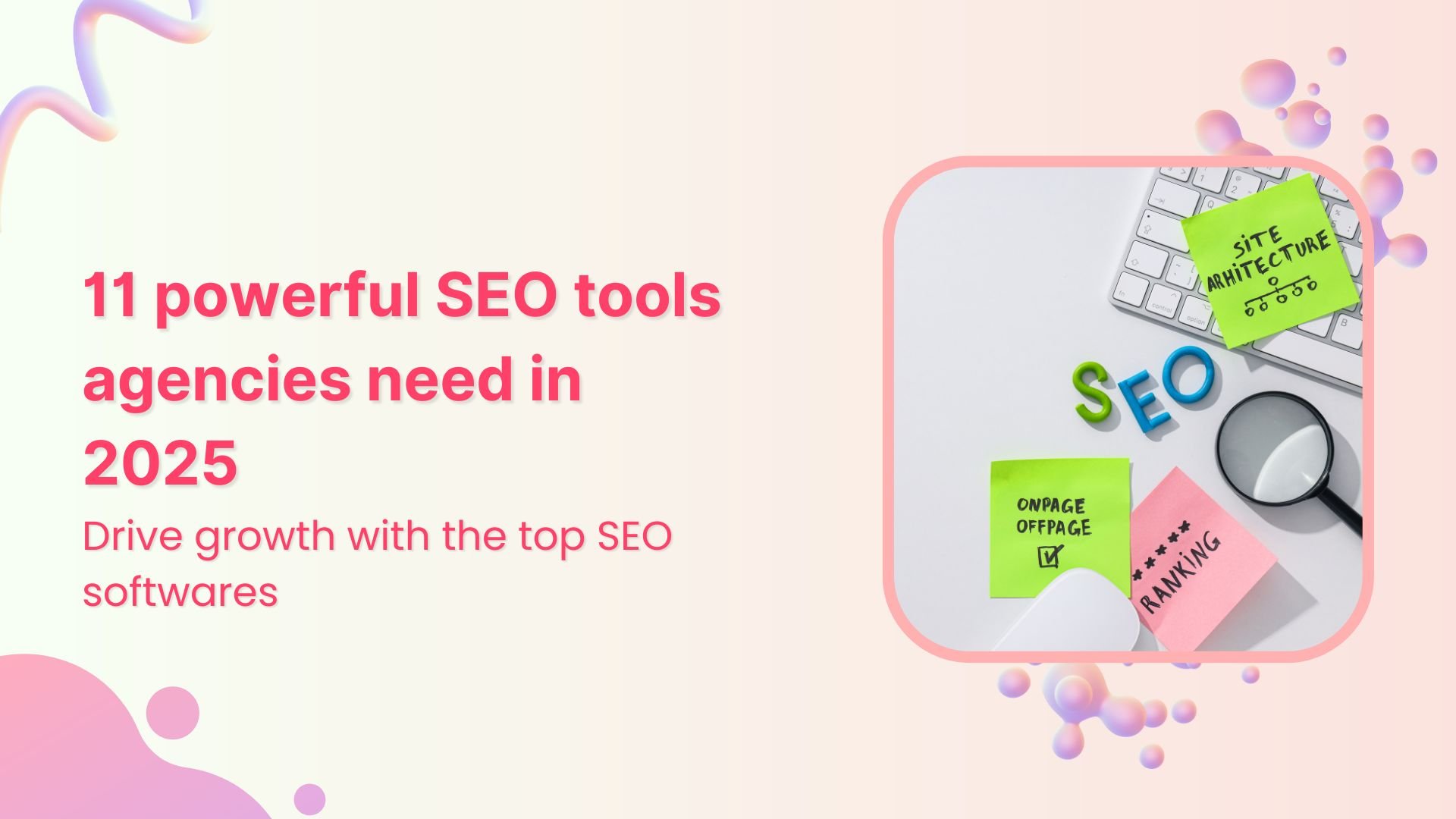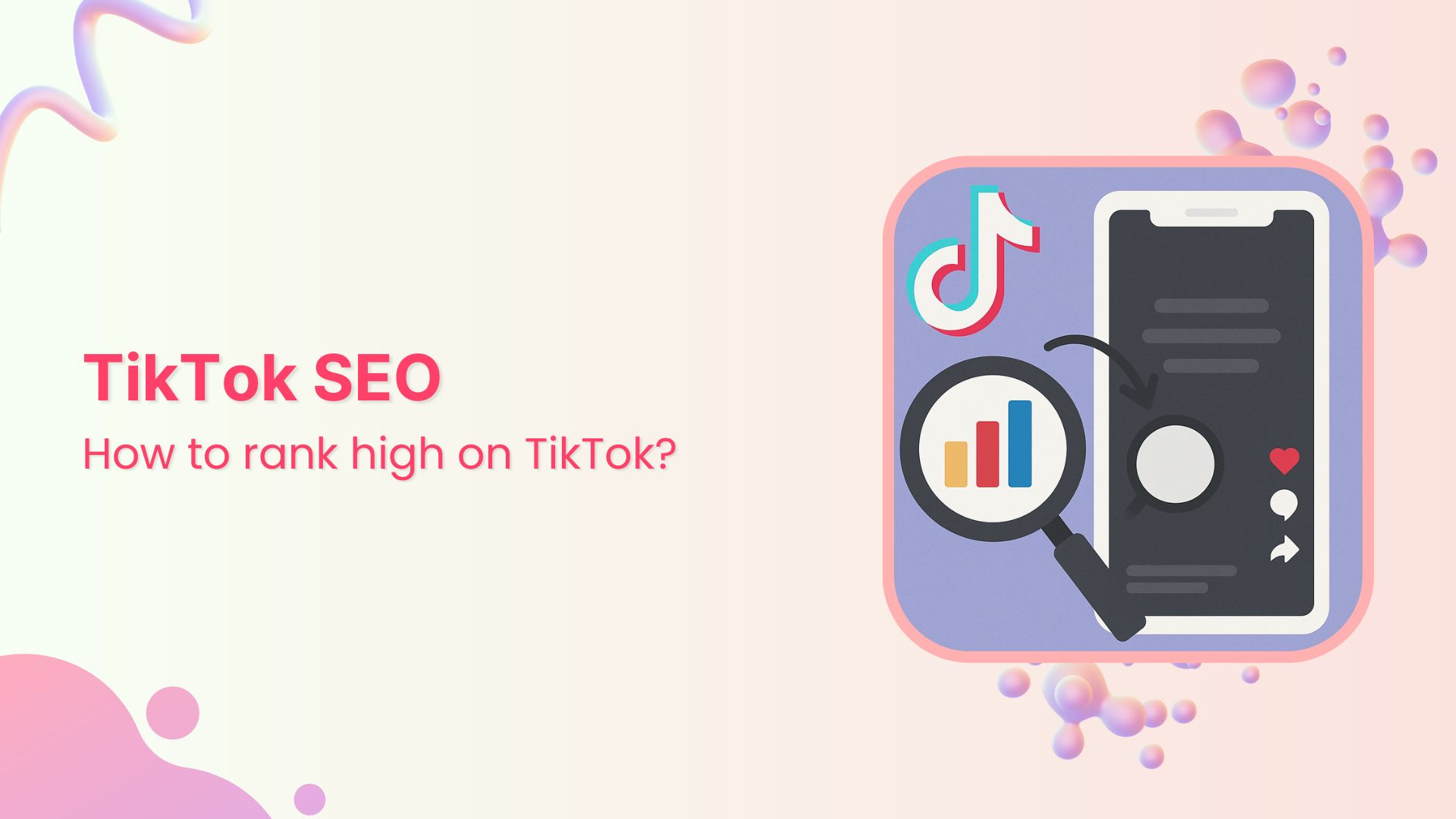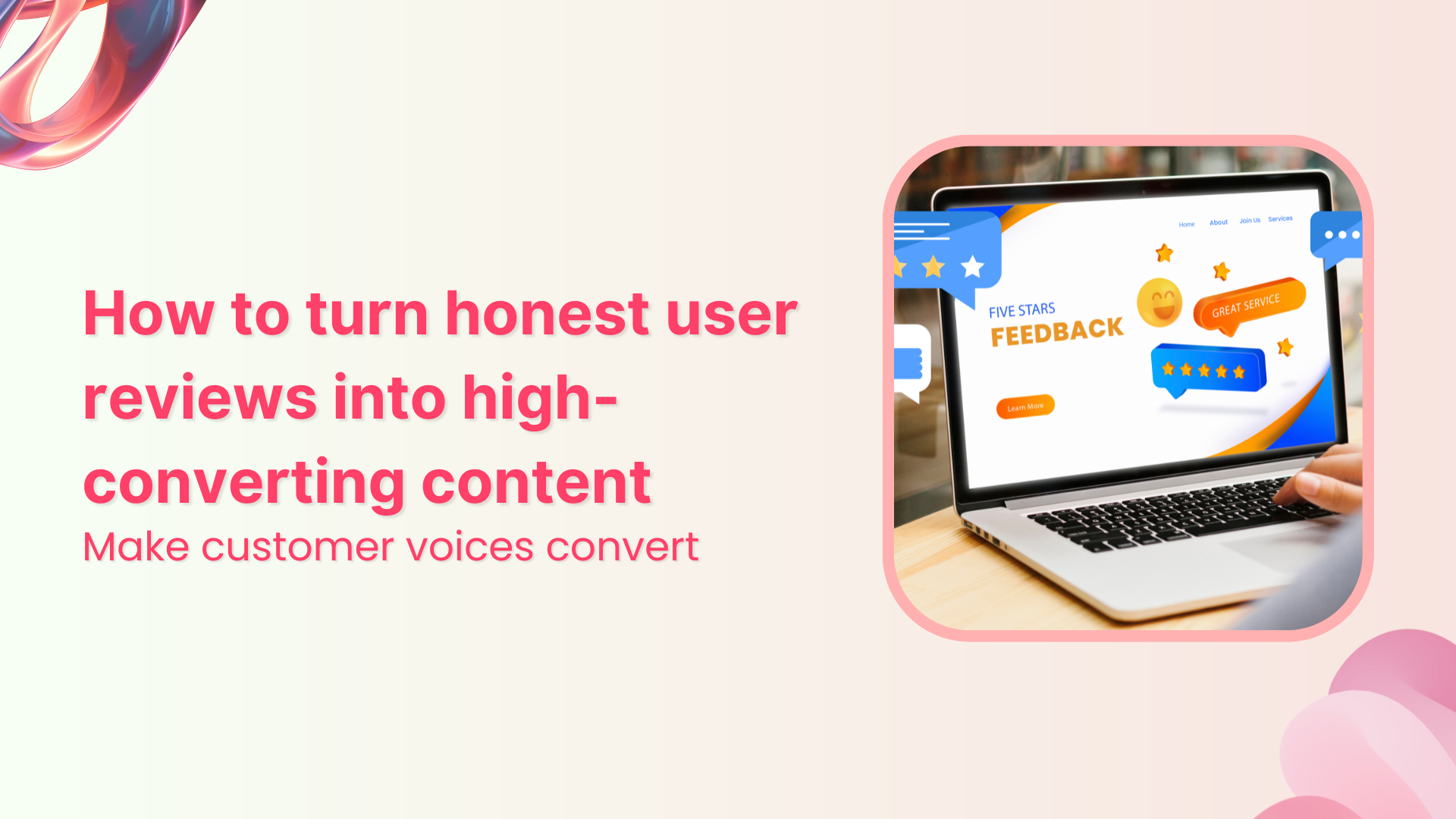Bulk-generate & schedule posts in seconds with Smart Scheduling. Try now!
SEO vs. Social Media: Which brings more website traffic?
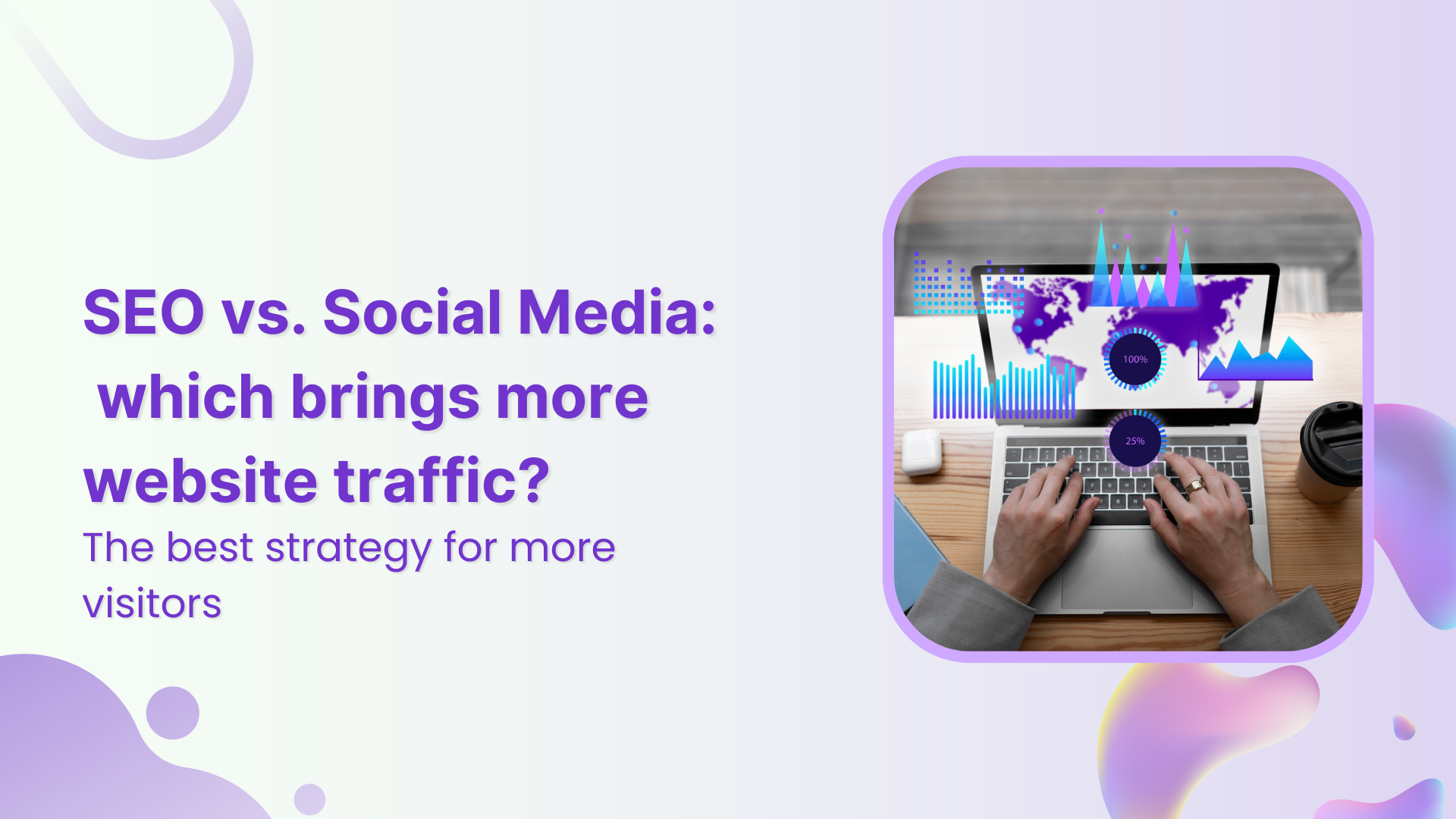
Website traffic is a driver of digital marketing success. First and foremost, it facilitates brand awareness as the more people land on your site, the more people will essentially know about your brand. It’s also an indispensable part of lead generation, with every site visitor being your potential customer.
And that’s without mentioning its massive importance for strategic marketing. In the long run, the more traffic you get, the more web data you can analyze, drawing valuable insights about your site’s performance and consumer behavior that can fuel your future marketing efforts.
Given its massive role in success, driving more site visitors must be one of the ultimate goals of modern business. Among a variety of website traffic sources, SEO and social media now tend to bring the most outcomes, and in this guide, we’ll tell you which of them has the potential to give you the most traffic and which key strategies should be involved in the process.
How SEO drives website traffic
What is SEO? Search engine optimization is the process of optimizing your site and content to attract larger volumes of quality organic search traffic. In essence, this tactic is about making your site and its content easier to understand and crawl for search engines so that they can give you a high Google ranking for relevant keywords. Higher ranking ultimately means more clicks on your link and, respectively, a larger number of visitors.
Simplified social media marketing for individuals & agencies.
Try ContentStudio for FREE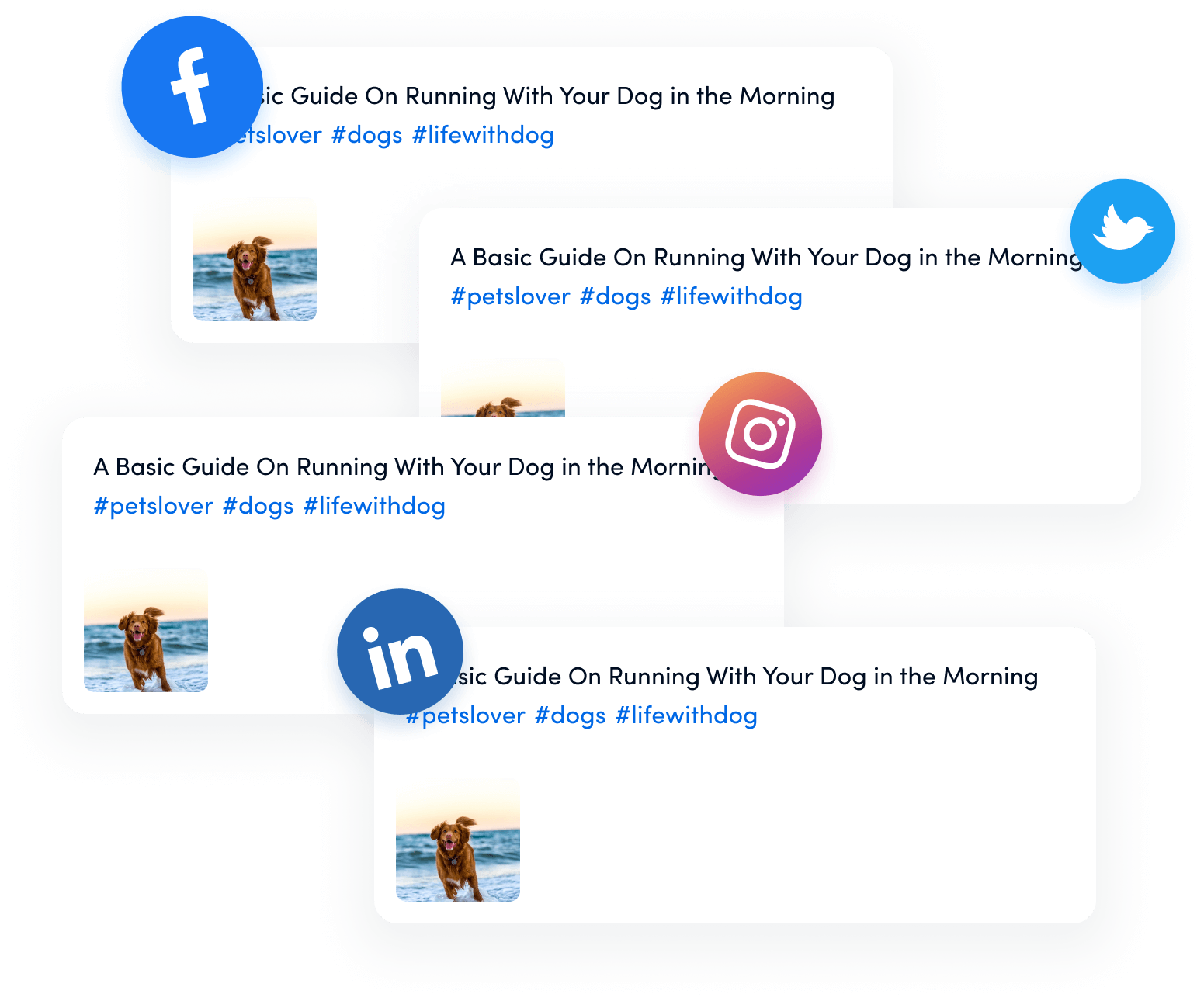
In the long run, leveraging SEO for website traffic can offer you a wealth of benefits, such as:
- Pronounced discoverability of your content on the web and competitive advantage.
- Greater credibility and industry authority in the eyes of prospects.
- Greater content depths and overall improved content marketing.
- A more wholesome user experience that results in satisfaction and loyalty.
- Higher digital marketing ROI through broad outreach and the acquisition of high-value, interested leads.
Last but not least, as you already know, SEO targets organic search traffic, meaning that it flows to your site through unpaid means, unlike such paid channels as pay-per-click (PPC) ads. You can use a reliable website traffic checker to benchmark the levels of paid and organic visits you have at the moment before you move on to implementing any strategies.
BTW: This is one point when search engine optimization is similar to social media–both traffic channels focus on organic visits to your site, which is why they are so invaluable for digital marketing.

Key SEO strategies for traffic growth
1. Keyword research and intent-based content
Keyword research and optimization make the groundwork of SEO. Keywords help search engines match your content to related user queries. Basically, they are needed to make your content discoverable on the web and, thus, facilitate more visits to your site.
Exploring target keywords is easy with the help of research tools like Google Keyword Planner and similar. To use these tools, you first need to determine potential general terms that your TA might be using to find content relevant to yours. Then, you insert these general terms into a keyword research tool and target the most promising queries based on:
- Relevancy
- Search volumes (high to mid)
- Competition (preferably low)
You need to target queries that align with your niche the best and offer good chances of obtaining a high Google ranking. You also need a combination of short-tail (more generalized) and long-tail (more specific and intent-driven) keywords. Once you target them, you need to group them by intent and leverage them in your content creation strategy.
Important: When crafting your content, you must keep focus on people, establish topical authority, and deliver real value. Search engines prioritize high-quality copy that meets users’ needs.
2. On-page SEO
Next, after keyword research and content creation comes on-page SEO. It implies optimizing the on-page elements of your site to adhere to SEO algorithm requirements and promote visibility. This strategy involves:
- Adding title tags and meta descriptions. These elements appear in search engine result pages (SERPs) and perform crucial roles of telling users what they’ll find on your page and enticing them to click. They must be clear and descriptive so that users instantly know whether your page will answer their questions or not, as well as intriguing and SEO-friendly so that more people click on them. Lastly, it’s also important to keep the length in mind–55-60 characters for titles and 150-165 characters for meta descriptions is perfect for ensuring they show in full on all devices.
- Creating and optimizing header tags. Different levels of header tags, such as H1, H2, and so on, help facilitate the readability of your copy, creating a better experience for users. Additionally, they improve the crawlability and understandability of your site for search engine bots, hence, affecting your rankings. Include different levels of header tags on your pages and optimize them with your target keywords.
- Creating a solid network of internal links. These act as navigation nets that help users hop from one page to another on your site and make it more understandable for search engines, hence improving experience and rankings.
Facebook Marketing
Manage and grow your brand on Facebook. Create, schedule, and publish posts, videos, and Reels to Facebook pages and groups.
Get Started for FREE
3. Technical SEO
Technical SEO is also one of the powerful organic traffic strategies. It targets the technical performance of your site, user experience, and crawlability and consists of the following elements:
- Security. Leveraging SSL certificates for secure web protocols.
- Crawlability. Leveraging XML Sitemaps, robots.txt files, and noindex tags to control how search engines crawl and index your pages.
- Site speed and Core Web Vitals. Optimizing large media elements, enabling caching, and leveraging other techniques to improve the loading performance of your site.
- Mobile optimization. Implementing responsive design to match Google’s mobile-first indexing approach and creating positive experiences for all users, regardless of device.
4. Link building to improve domain authority
Lastly, off-page SEO, such as link building is a pivotal part of every strategy using SEO for website traffic. Links, particularly in the context of Web 3.0 where decentralized trust and verifiable reputation are key, contribute to your credibility and niche expertise. They show both your target audience and search engines that your content delivers value and that you deserve trust. Not to mention that receiving backlinks from reputable and popular resources allows you to expand your outreach and tap into additional sources of site visits. To ensure the highest quality links, consider working with a best link building agency to refine your strategy.
There are a few tactics you can use for link building:
- Create shareable blog posts and unique pieces of content, such as infographics, case studies, market reports, etc.
- Engage in guest posting.
- Analyze your competitors and mimic their efforts or win over their quality backlinks with the help of techniques like skyscrapers.

How social media drives website traffic
Social media marketing leverages social media platforms for building brand awareness, connecting with your TA, generating sales, and, of course, driving website traffic. Social media traffic can be divided into two categories:
- Organic. As was mentioned earlier, social media marketing can bring you organic (unpaid) traffic through high-quality content and direct engagement with your audience.
- Paid. It’s also possible to attract visitors through paid tools, such as social media advertising.
Key social media marketing strategies for website traffic growth
1. Shareable content
The first organic way to take people from your social media profiles to your site is by getting them genuinely interested. Social media enables you to use trends and go viral yourself with the help of share-worthy content, such as videos, infographics, memes, and so on. The more viral content you post, the more engagement bursts you can get. Respectively, the more people can potentially follow you and hop on your site out of interest.
To reap maximum benefits, it’s important to know what kind of content engages your TA, which platforms they use the most, and at which times you should post to capture them. A good way to jump-start your SMM strategy is to watch how your top competitors handle it and learn from their examples.
Content Discovery
Find the top-performing content on the web and never run out of social media post ideas.
Get Started for FREE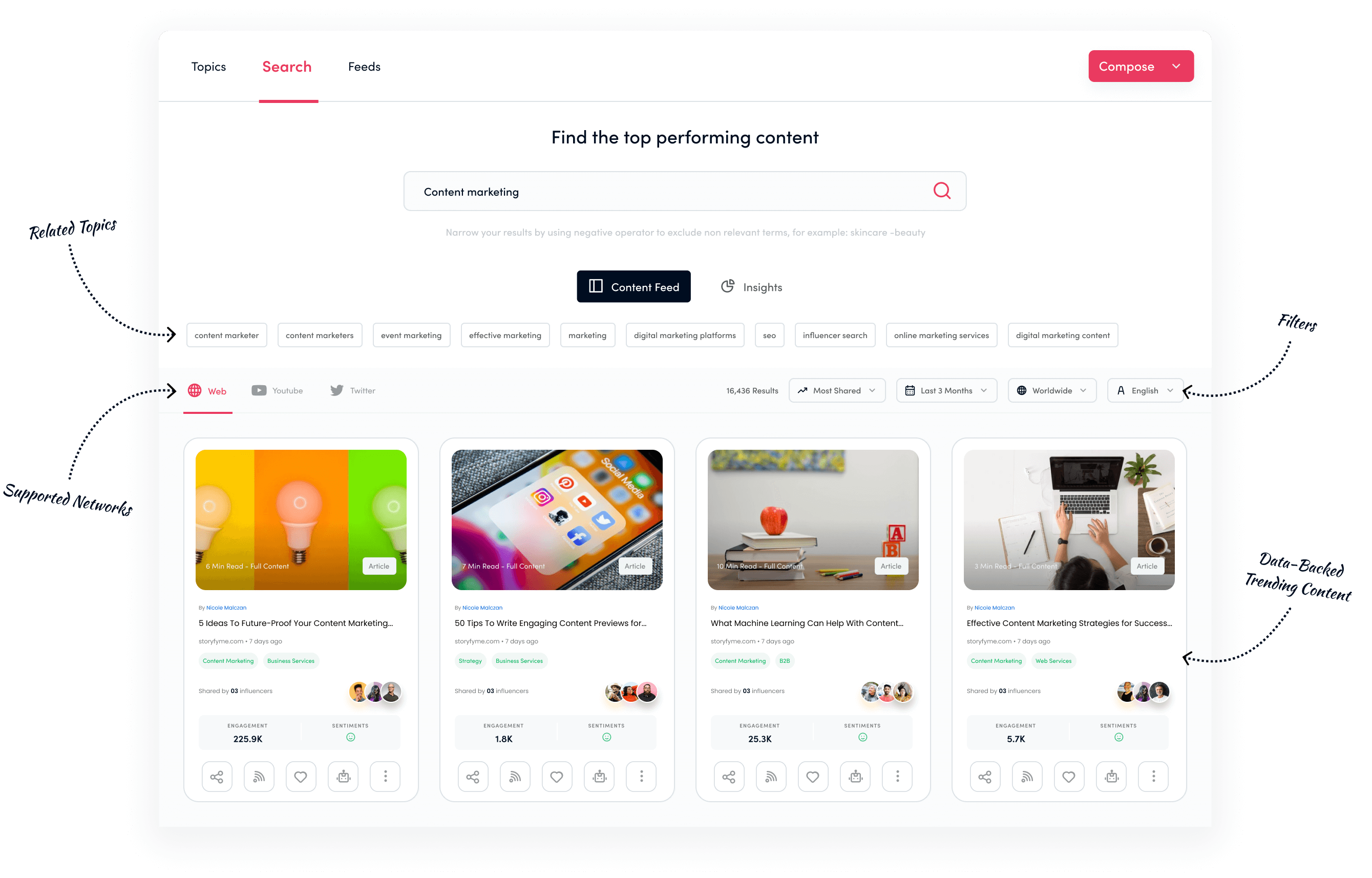
Bonus tip: Though they are not exactly the same, social media algorithms work similarly to search engines. That is, you shouldn’t neglect the basic principles of optimization when implementing your SMM efforts. Target relevant keywords and optimize your profiles and publications for enhanced visibility.
2. Paid promotions for wider reach
While attracting unpaid site visits through engagement is important, it’s also not worth neglecting the paid opportunities offered by SMM. Social media advertising can give you an opportunity to fine-tune who you reach with your message through careful targeting and expand your reach beyond organic.
In the long run, creating SMM ads can help you in a number of ways:
- Build up brand awareness
- Grow your following
- Tap into low-cost advertising
- Gain valuable TA insights through analytics
3. Influencer collaborations
The impact of influencer marketing is hard to undervalue. These days, as many as 63% of shoppers state they are more likely to purchase a product or service if it’s a recommendation from an influencer they trust. Such deep trust users have in social media influencers offers businesses an enormous opportunity to tap into–partnering with an influencer can give you a reach to their audiences and an enormous level of trust that can generate traffic and sales.

To make the most out of it, follow these simple recommendations:
- First, make sure you know your TA well and find influencers who cover it.
- Don’t be afraid to collaborate with micro-influencers.
- Make your partnerships lasting and authentic.
SEO vs. social media: key differences
As you now know, both SEO and social media are worthy traffic channels that can help you build brand awareness and stimulate business growth. Yet, if you’re wondering which channel is the best and can bring you the most site visits, it’s important to understand how they are different:
- Traffic longevity. SMM is a great tool for instant engagement through going viral. It can offer you short-term traffic bursts, whereas SEO is a long-term strategy that offers sustained results over time.
- Audience engagement. SMM might be a better solution in terms of audience engagement, as social platforms imply direct interaction between users and brands. SEO, on the other hand, targets prospects who are actively seeking answers to their specific questions, so direct engagement might not be its primary goal.
- Cost implications. SEO targets organic search traffic. It takes time to implement. However, it can offer sustainable and cost-effective long-term results. Social media works slightly differently–causing bursts of engagement, it often requires paid ads to maintain high visibility between these bursts.
- Algorithm dependency. Both SEO and SMM outcomes depend on algorithm updates. Your search engine efforts will be altered by Google updates, whereas SMM efforts will depend on updates of specific platforms.
Conclusion
As you now know, both SEO and SMM can be excellent website traffic sources that foster your awareness and growth. These channels have some similarities, such as algorithm dependency, as well as some differences, such as audience engagement rate or traffic longevity.
So, which channel is eventually best for attracting website traffic? At the end of the day, it’s hard to tell whether SEO or SMM can be a better source of site visits because they are different. Moreover, both these channels play massive roles in digital marketing. That is, maintaining a solid balance between these two might be the best approach to secure online visibility and growth.
FAQs
1. Why is website traffic important for digital marketing success?
Website traffic is crucial because it increases brand awareness, generates leads, and provides valuable insights into consumer behavior. More traffic means more opportunities to convert visitors into customers.
2. What is the difference between SEO traffic and social media traffic?
SEO traffic comes from search engines when users search for relevant keywords, offering long-term, sustainable results. Social media traffic is driven by user engagement on platforms like Facebook, Instagram, and LinkedIn, often creating short-term traffic spikes but requiring constant activity or paid ads.
3. Which is better for driving traffic: SEO or social media?
Both are powerful but serve different purposes. SEO offers consistent, long-term traffic while social media provides immediate engagement and visibility. A balanced strategy combining both delivers the best results.
4. How long does it take to see results from SEO?
SEO is a long-term strategy that may take 3 to 6 months or longer to show significant results, depending on your competition, niche, and efforts. However, the traffic gained is sustainable and cost-effective over time.
Recommended for you


Powerful social media management software
14-day free trial - No credit card required.

